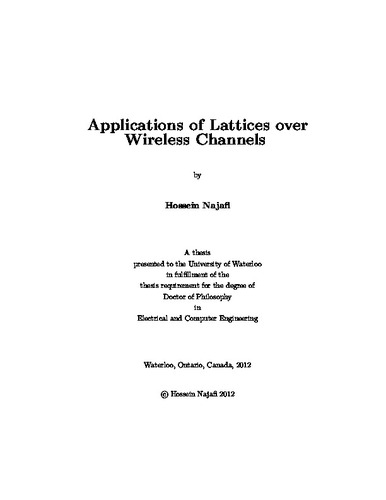| dc.description.abstract | In wireless networks, reliable communication is a challenging issue due to many attenuation factors such as receiver noise, channel fading, interference and asynchronous delays. Lattice coding and decoding provide efficient solutions to many problems in wireless communications and multiuser information theory. The capability in achieving the fundamental limits, together with simple and efficient transmitter and receiver structures, make the lattice strategy a promising approach. This work deals with problems of lattice detection over fading channels and time asynchronism over the lattice-based compute-and-forward protocol.
In multiple-input multiple-output (MIMO) systems, the use of lattice reduction significantly improves the performance of approximate detection techniques. In the first part of this thesis, by taking advantage of the temporal correlation of a Rayleigh fading channel, low complexity lattice reduction methods are investigated. We show that updating the reduced lattice basis adaptively with a careful use of previous channel realizations yields a significant saving in complexity with a minimal degradation in performance. Considering high data rate MIMO systems, we then investigate soft-output detection methods. Using the list sphere decoder (LSD) algorithm, an adaptive method is proposed to reduce the complexity of generating the list for evaluating the log-likelihood ratio (LLR) values.
In the second part, by applying the lattice coding and decoding schemes over asynchronous networks, we study the impact of asynchronism on the compute-and-forward strategy. While the key idea in compute-and-forward is to decode a linear synchronous combination of transmitted codewords, the distributed relays receive random asynchronous versions of the combinations. Assuming different asynchronous models, we design the receiver structure prior to the decoder of compute-and-forward so that the achievable rates are maximized at any signal-to-noise-ratio (SNR). Finally, we consider symbol-asynchronous X networks with single antenna nodes over time-invariant channels. We exploit the asynchronism among the received signals in order to design the interference alignment scheme. It is shown that the asynchronism provides correlated channel variations which are proved to be sufficient to implement the vector interference alignment over the constant X network. | en |

